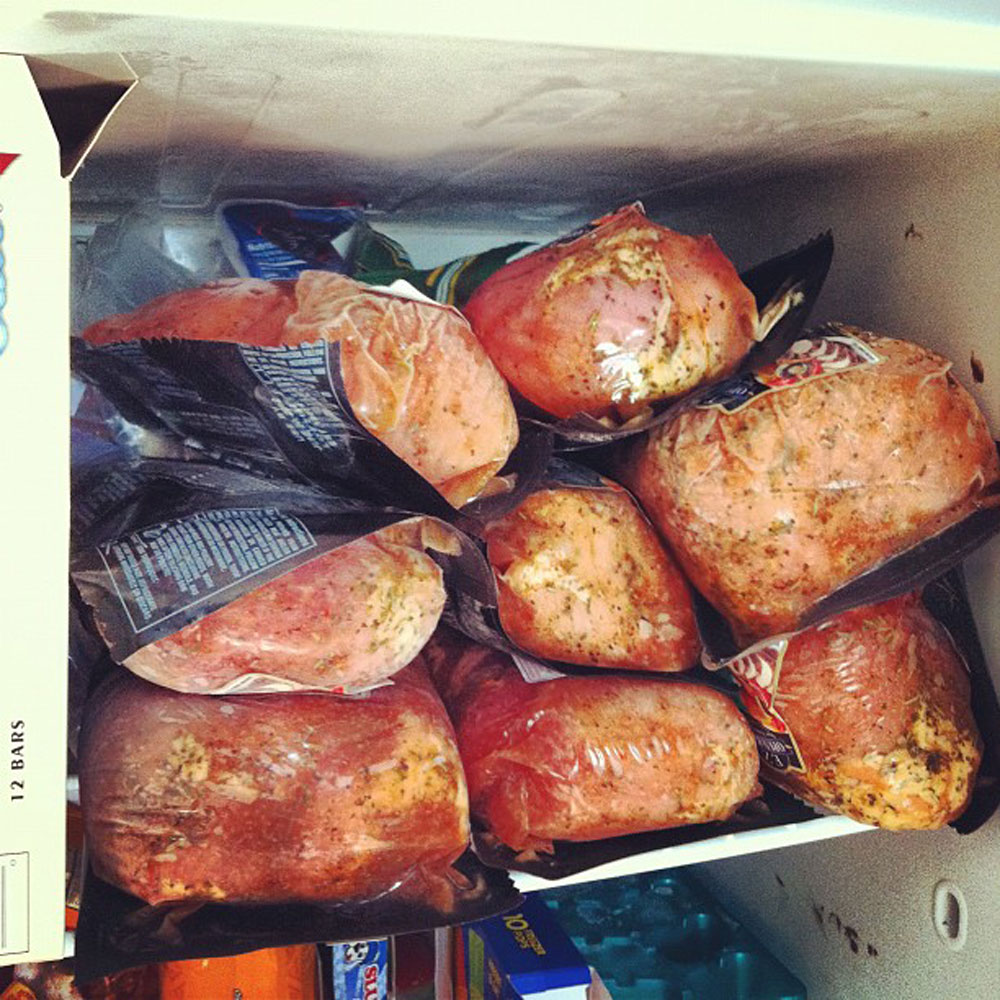
April 17, 2020; BBC News
While many act as if everyone these days is “working at home,” this is hardly the case. Back in February 2020, about 158.7 million workers in the US had jobs. Two months later, with 22 million losing their jobs, about 136.5 million remain employed, over a third of whom—48.7 million—are deemed “essential workers.” By definition, these people are not working from home. And, as many, such as the Economic Policy Institute, have noted, these “essential” jobs are not evenly distributed, as people of color and lower-income earners hold an outsized share of these positions.
It was among these 48.7 million where one of the largest outbreaks of COVID-19 in the US occurred—not in New York City, but in Sioux Falls, South Dakota, as Jessica Lussenhop of BBC News explains.
The place in question was a Smithfield pork-processing plant. Lussenhop notes that, “When running at full capacity, it processes 19,500 freshly-slaughtered hogs per day, slicing, grinding, and smoking them into millions of pounds of bacon, hot dogs, and spiral-cut hams. With 3,700 workers, it is also the fourth-largest employer in the city.” All told, an estimated five percent of all US pork product production comes from Smithfield’s Sioux Falls plant.
The workforce, details Lussenhop, “is made up largely of immigrants and refugees from places like Myanmar, Ethiopia, Nepal, Congo, and El Salvador. There are 80 different languages spoken in the plant. Estimates of the mean hourly wage range from $14–16 an hour. Those hours are long, the work is grueling, and standing on a production line often means being less than a foot away from your coworkers on either side.”
Smithfield was founded in Smithfield, Virginia in 1936. Today, it is the largest pork producer in the world. As of 2018, it employed over 54,000 employees and had $15 billion in sales worldwide. In 2013, the firm was a acquired by a Chinese company, WH Group Limited, led by a billionaire CEO, Wan Long.
The first COVID-19 case at the plant was revealed publicly on March 26th. The company confirmed to the local paper that one worker had fallen ill from the novel coronavirus but said that the person had been quarantined and the other workers were safe.
But this was not the case. For three weeks, workers, writes Lussenhop, continued working less than a foot from each other, passing “in and out of crowded locker rooms, walkways, and cafeterias.” Lussenhop adds that, “During that time, the number of confirmed cases among Smithfield employees slowly mounted, from 80 to 190 to 238.”
Sign up for our free newsletters
Subscribe to NPQ's newsletters to have our top stories delivered directly to your inbox.
By signing up, you agree to our privacy policy and terms of use, and to receive messages from NPQ and our partners.
By April 15th, when the plant was finally closed, it had “become the number one hotspot in the US, with a cluster of 644 confirmed cases among Smithfield employees and people who contracted it from them.”
The Sioux Falls plant is an extreme example of the risks that food processing workers face, but it is not unique. As Lussenhop notes, “Food processing plants throughout the country are experiencing coronavirus outbreaks which have the potential to disrupt the country’s food supply chain. A JBS meatpacking plant in Colorado has shut after five deaths and 103 infections among its employees. Two workers at a Tyson Foods plant in Iowa also died, while 148 others were sickened.”
In Sioux Falls, in particular, there are plenty of indications that the COVID outbreak—and certainly its severity—were avoidable. Lussenhop reports that Smithfield employees, union reps, and Sioux Falls immigrant advocates all allege that “early requests for personal protective equipment were ignored, that sick workers were incentivized to continue working, and that information regarding the spread of the virus was kept from them, even when they were at risk of exposing family and the broader public.”
Kooper Caraway, president of the Sioux Falls AFL-CIO, tells Lussenhop that in early March union officials requested worker protections, “including staggering shifts and lunch schedules, which can pack 500 workers into the factory cafeteria at once.” Lussenhop adds that Caraway says the union also requested “personal protective gear like masks and overcoats, temperature-checking at the doors, and sanitation stations.”
“This was before anyone at the plant tested positive,” says Caraway. But it was only after the South Dakota State Health Department on April 8th confirmed 80 cases that management began enacting safeguards—too late to make a difference.
Making matters more difficult for workers is their immigrant status. Advocates note that immigrants with work visas fear that “even if they were to apply for unemployment, they might be considered ‘public charges’ which could render them ineligible for permanent residency,” even though this isn’t true. Additionally, the Coronavirus Aid, Relief, and Economic Security (CARES) Act excludes anyone living in a mixed-status household with an undocumented family member from receiving stimulus checks.
As Taneeza Islam, executive director of South Dakota Voices for Peace and an immigration lawyer, tells Lussenhop, many workers see few options beyond going to work and risking getting exposed.—Steve Dubb













